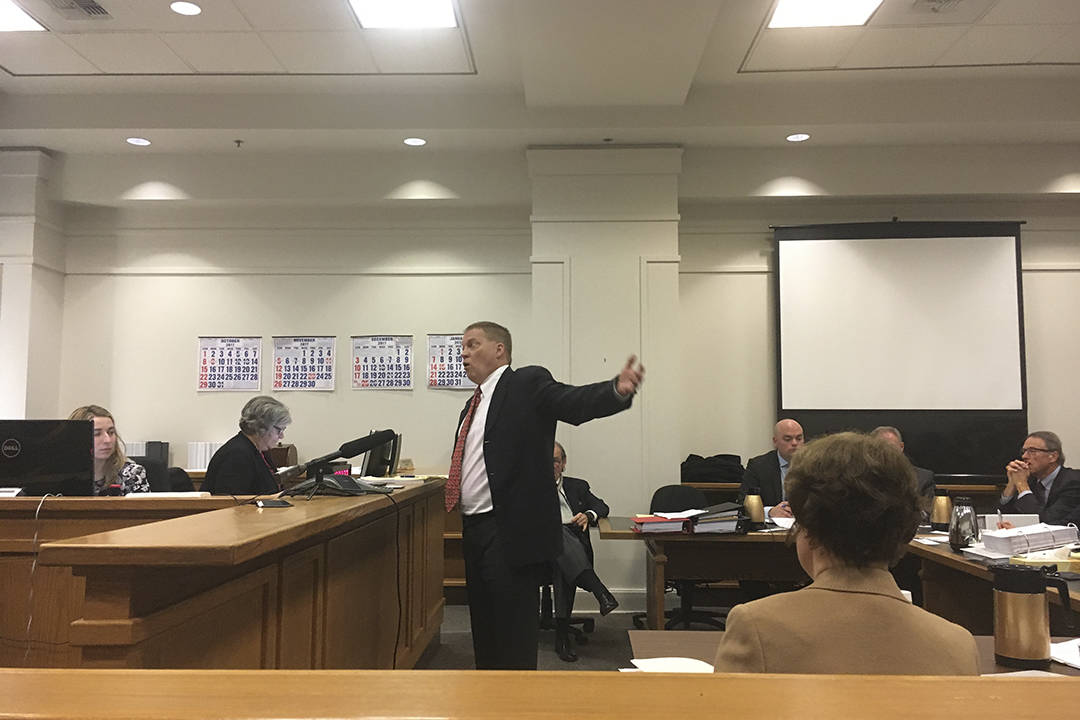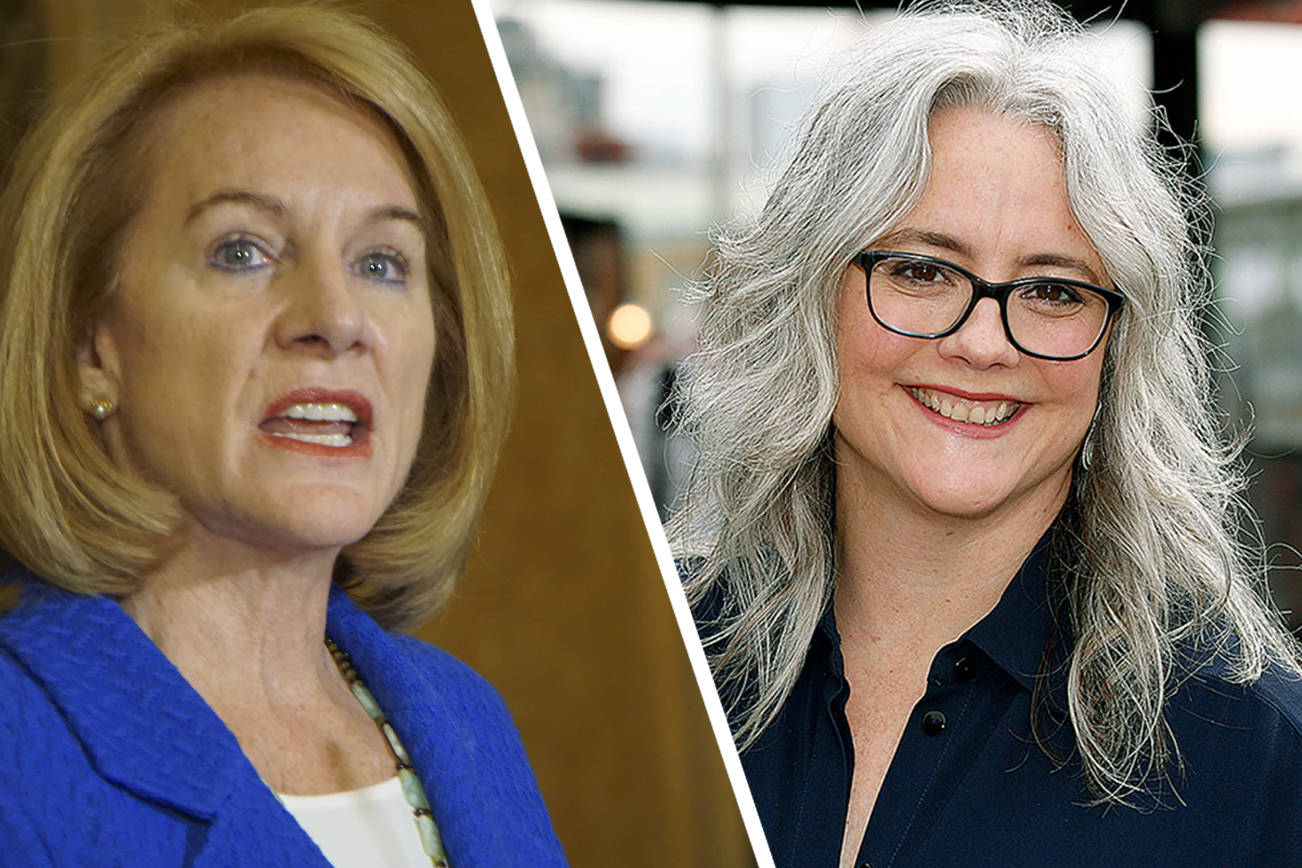A central dynamic in Seattle politics can be summed up in a percentage and an acronym: The percentage is 25. The acronym is MHA.
MHA stands for “mandatory housing affordability,” the term deployed by city planners to describe affordability requirements imposed on new developments in exchange for zoning changes allowing developers to build taller buildings; 25 is the percent of units several candidates in this year’s mayoral and City Council elections have argued should be included in developments across the city—far higher than the rates, ranging from 2 to 11 percent, that the city is now implementing in some neighborhoods.
In the mayoral race, for example, Nikkita Oliver argued on her campaign site that there is “no compelling reason that Seattle should not require a larger amount of investment from developers,” going on to say that her administration would require “that 25% of all new up-zoned developments be affordable.” The statement appears under a headline that reads “Stop giving developers a free ride.”
While Oliver did not advance in the primary, the issue lives on in the campaign of Jon Grant, the former Tenants Union director who has made 25 percent MHA a central talking point of his campaign, with an entire page on his website devoted to the idea. In turn, Grant’s opponent, Teresa Mosqueda, has highlighted his position as not only bad policy but indicative of Grant’s flawed approach to politics. Indeed, while the concept is wrapped up in knotty economics and lots of wonky jargon, both sides of the debate see something bigger going on with the push for 25 percent. For Grant’s side, it’s about the city standing up to developers and forcing them to do more to deal with Seattle’s affordable-housing crisis. “It’s important to understand that it’s an aspirational goal,” Grant says. “What the city needs to do is figure out what is the highest end that affordability can impose. We’re not getting that in Seattle.”
Mosqueda, meanwhile, has argued that Grant’s insistence on 25 percent MHA—despite evidence that she says indicates that the plan is not workable—shows that her opponent is more interested in picking fights than finding workable solutions to problems—that he’s all rhetoric and no reality. “I don’t know about you, but I think a lot of your readers are tired of people who run for office who make these grand promises and then don’t deliver,” Mosqueda told the blog The C Is for Crank recently. “What I’m talking about is getting into office and then delivering the affordable housing that we need across the income spectrum. So it’s not going to be a one-sentence bumper-sticker solution, it’s going to be a multifaceted approach.”
Who’s right? Strangely enough, both candidates have argued that San Francisco proves they are.
San Francisco has long had greater housing-affordability woes than Seattle, and has also long had more aggressive affordability policies to address them. This includes far higher MHA rates—there called inclusionary zoning regulations—that became even higher last year when voters overwhelmingly passed Proposition C.
Just like Seattle’s policy, the formulas for affordable-housing requirements presented in Prop C are complicated. Also like Seattle, they include provisions allowing developers to pay fees to San Francisco in lieu of including affordable units in their buildings. However, broadly speaking, what Prop C did was impose what Grant and Oliver would here: 25 percent affordable-housing requirements for all developments with 25 or more units.
When Prop C passed, the message was clear: “San Franciscans are demanding that affordable housing be a top priority in their City and that private development contribute its fair share towards affordable housing,” the Council on Affordable Housing Organizations wrote in response to the electoral victory. But if the will of the voters in San Francisco was clear, the lessons for Seattle are far from.
Shortly after Prop C passed, the city controller’s office set about analyzing how the policy would affect development in San Francisco. In February, the office released its report, which recommended lowering the affordability requirements. The report suggested the rules would cause fewer market-rate units to be built, thus exacerbating housing costs. In response, the Board of Supervisors—San Francisco’s city council—unanimously passed an ordinance this summer lowering the affordability requirements to 18 percent, with higher rates for in-lieu fees.
For Mosqueda and other skeptics of the 25 percent figure, the lesson drawn from San Francisco is clear: 25 percent is just too high, and actually worsens housing costs.
“The San Francisco public were sold a bill of goods when it came to Prop. C. Voters were told that developers were going to continue to produce thousands of units of housing,” wrote one urbanist on Medium. “What actually happened? Overall housing proposals tanked—they are 20 percent of what they could have been based on the pre-Prop. C trend.”
“What we saw in San Francisco, which passed an initiative saying they wanted a 25 percent requirement for all new buildings, is that it basically brought development almost to a halt during one of the biggest economic booms in history. Now it’s back with their Board of Supervisors,” Mosqueda told The C Is for Crank. Mosqueda also argues that San Francisco’s experiment shows the folly of trying to set a number that applies to all development citywide, and the wisdom of Seattle’s current approach, which sets different rates for different neighborhoods.
Grant, though, doesn’t concede that San Francisco’s (brief) foray into the world of 25 percent affordability requirements will prove to be a cautionary tale for Seattle. He argues that the report that led the Board to lower the requirements was heavily influenced by developers—comparing it to the Housing Affordability and Livability Agenda board that he sat on and that eventually set up the framework for Seattle’s MHA program—and that the Board of Supervisors essentially did those developers’ bidding in lowering the requirements. This point may give one pause, since it was the Board of Supervisors who put Prop C on the ballot to begin with. Addressing this contradiction, Grant argues it shows how persistent moneyed interests are: “Developers are incredibly powerful. They are permanent institutional powers in city politics.” The decision to lower the requirements was not an economic decision, he continues, but a political one.
But while Grant insists the process was hijacked by developers, he also argues that the San Francisco process was preferable to what happened in Seattle. The way Grant sees it, Prop C allowed voters to stick a flag in the ground and gave them a seat at the table; from there, developers had to claw back profits. Conversely, he says, Seattle’s process allowed developers to set low figures via HALA that housing advocates now have to try to increase. “It was kind of like HALA in reverse,” Grant says of San Francisco’s process. “The city said, ‘We want 25 percent. How can we make that work?’ ”
Underlying Grant’s approach to affordable housing is a fundamental distrust of developers and a worldview that frames the tension between house builders and those who would be housed as a zero-sum game. Grant’s field organizer, Shaun Scott, summed up this approach to politics in a searing op-ed published on The Stranger’s “Slog” two weeks ago: “In the framework of Seattle’s faux-progressives, the problem with capitalism isn’t that it consigns thousands of workers to poverty wages in cities with runaway rent prices. It’s that we’re not being nice enough to each other for it to work.”
A week later, Mosqueda, joined by Oliver and Aretha Basu, published their own essay on progressivism, arguing that Seattle shouldn’t judge policy makers by how antagonistic they are toward those with power, but by how much they get done: “If we are doing this work with a vision for a truly just and equal world, we have to be able to imagine a time beyond this local election, when progress does not always require us to be adversarial,” they wrote.
Depending on who wins in November, the Council will lean a little further toward one approach or the other when it comes to creating affordable housing.
dperson@seattleweekly.com
A previous version of this story misidentified Shaun Scott’s role with the Grant campaign. He is field organizer, not field director. The post has been updated.








